Weird Warrior: Chrysler’s A57 30-Cylinder Tank Engine
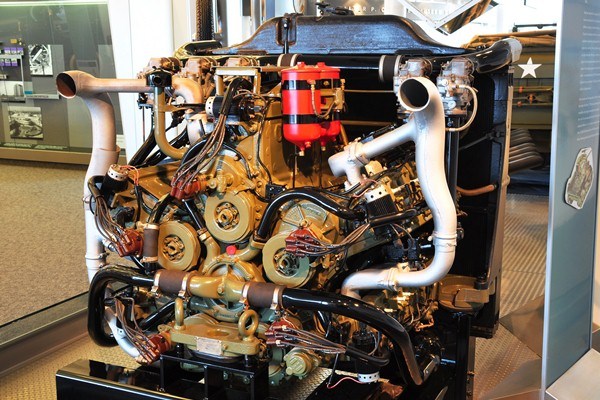 Necessity
is the mother of invention, especially in wartime. Here’s one of the
most unusual powerplants ever produced in the Motor City: the
30-cylinder Chrysler A57 tank engine of World War II. Let’s take a
closer look.
Necessity
is the mother of invention, especially in wartime. Here’s one of the
most unusual powerplants ever produced in the Motor City: the
30-cylinder Chrysler A57 tank engine of World War II. Let’s take a
closer look. Despite some shortcomings, the Sherman M4 tank was a valuable tool for the Allies in World War II, and it was produced in vast numbers—nearly 50,000 units. One of the challenges was in building suitable engines for the 40-ton tank in sufficient numbers. The array of powerplants included converted aircraft radials in both gasoline and diesel form, twin GM 6-71 diesels, and a giant 1100 CID Ford V8. But easily the most unusual engine of the bunch was the 30-cylinder A57 Multibank engine developed in 1941. Essentially, five Chrysler inline sixes were lashed together in a star pattern to form a sort of quasi-radial.
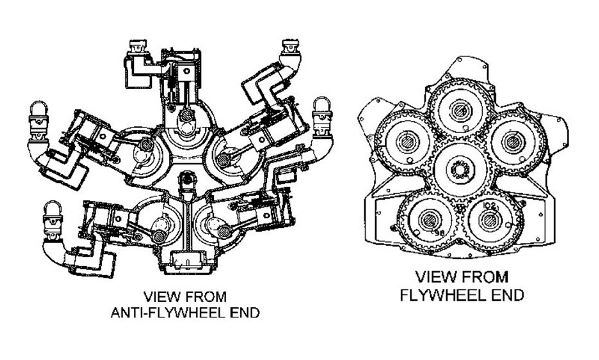 In
a nutshell, these schematic views show how the A57 was laid out: five
standard Chrysler passenger car engines were configured in a circular
pattern, forming one dense and heavy unit. Five helical gears at the
ends of the crankshafts drove a sixth gear and an output shaft.
In
a nutshell, these schematic views show how the A57 was laid out: five
standard Chrysler passenger car engines were configured in a circular
pattern, forming one dense and heavy unit. Five helical gears at the
ends of the crankshafts drove a sixth gear and an output shaft.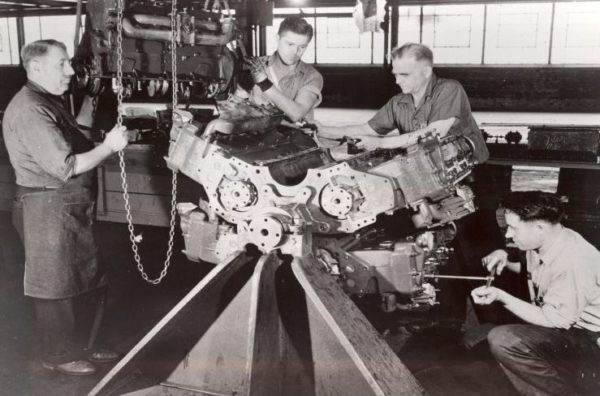 This
view of the Multibank engine on its assembly fixture clearly
illustrates the clever setup devised by Chrysler lead engineer Harry
Woolson and famed Chrysler engine wizard Mel Carpentier. Each of the
five L-head inline sixes featured a bore of 3.4375 inches and a stroke
of 4.5 inches, displacing 250.6 cubic inches. Total displacement was
1253 cubic inches (21 liters) and the total weight with accessories was
nearly 5,250 lbs. Various output figures have been quoted, from 370 hp
to 445 hp at 2,400 rpm, and with a very ordinary 6.2:1 compression ratio
the engine could run on regular gasoline.
This
view of the Multibank engine on its assembly fixture clearly
illustrates the clever setup devised by Chrysler lead engineer Harry
Woolson and famed Chrysler engine wizard Mel Carpentier. Each of the
five L-head inline sixes featured a bore of 3.4375 inches and a stroke
of 4.5 inches, displacing 250.6 cubic inches. Total displacement was
1253 cubic inches (21 liters) and the total weight with accessories was
nearly 5,250 lbs. Various output figures have been quoted, from 370 hp
to 445 hp at 2,400 rpm, and with a very ordinary 6.2:1 compression ratio
the engine could run on regular gasoline.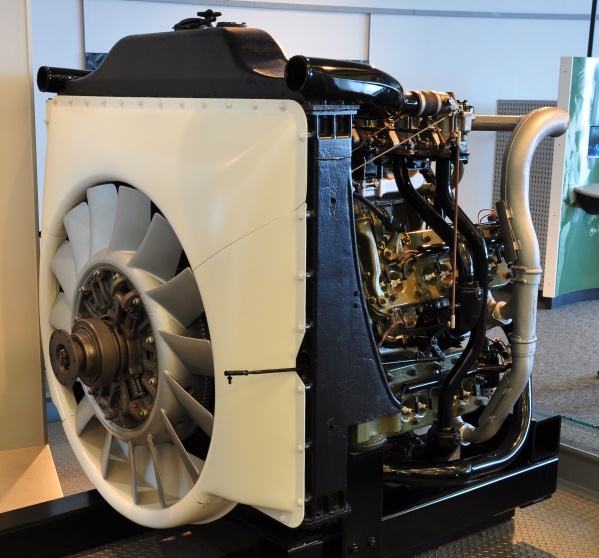 This
rear view of a Multibank engine shows the enormous shaft-driven,
cast-aluminum cooling fan along with the housing and radiator. Several
carburetor and intake systems were tried in an effort to improve fuel
distribution. The beautifully restored example shown here was on display
at the Walter P. Chrysler Museum for many years, giving many visitors
their only opportunity to see the unusual engine. Unfortunately, the
museum is now permanently closed.
This
rear view of a Multibank engine shows the enormous shaft-driven,
cast-aluminum cooling fan along with the housing and radiator. Several
carburetor and intake systems were tried in an effort to improve fuel
distribution. The beautifully restored example shown here was on display
at the Walter P. Chrysler Museum for many years, giving many visitors
their only opportunity to see the unusual engine. Unfortunately, the
museum is now permanently closed.Between July 1942 and November 1943, some 7,499 Sherman M4 tanks with A57 Multibank engines were built by Chrysler at the Detroit Tank Arsenal in Warren, Michigan. Known as the M4A4, the A57-equipped Sherman (below) required a lengthened hull to accommodate the 30-cylinder engine, which was mounted at the rear with the fan facing aft. (Around 100 M3A4 Lee tanks, the Sheman’s predecessor, were also equipped with the A57.) Most of the M4A4 tanks produced were supplied to the British military under Lend-Lease, and dozens, maybe more, still exist in museums and collections around the world.
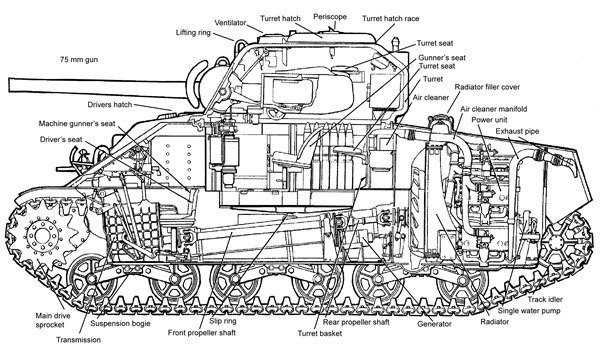

No comments:
Post a Comment